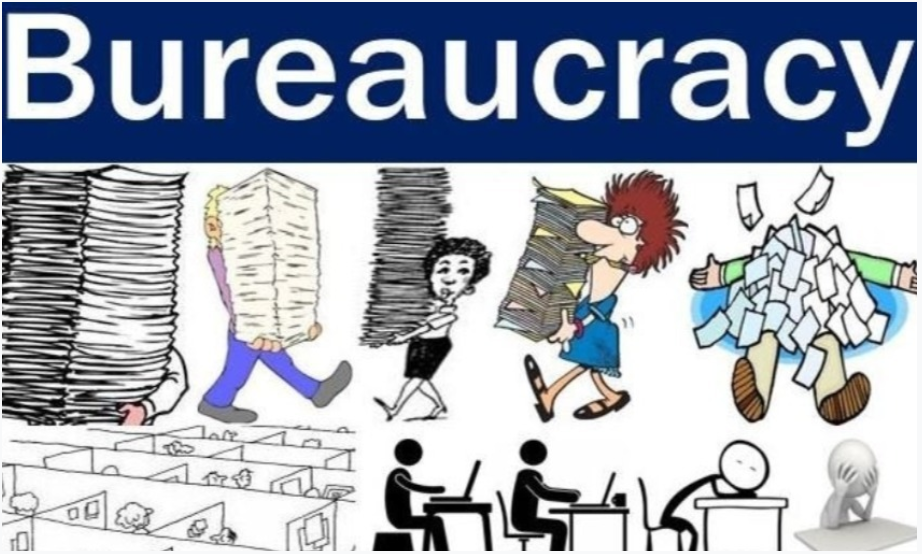Cadre Based Civil Service

Figure 1: No Copyright Infringement Intended
Context:
- According to Supreme Court, successful lAS aspirants have no right to be allocated to a cadre of their choice.
About Cadre Based Civil Service:
- Cadre literally means a small group of trained people who form basic unit of a military, political or business organization.
- In All India Services, once selected, candidates are assigned cadres based on their preferences, merit and availability of positions.
- In India, each state is a cadre with some exceptions like AGMUT and DANICS. These are joint state cadres with multiple states.
Issue with Cadre Based Civil Service :
- Civil Services in India has been constitutionally designed in way that it maintains all India character and 'outsiders' are posted in state cadre.
- 'Outsiders' to state cadre would ensure a higher level of objectivity and neutrality in a system which was likely to face enormous regional and local pressure. But in the 1980s and 90s, partisanship, local considerations and nepotism crept into the system.
- Permanency of cadres: It results in inefficiency and ineffectiveness in the working of civil services. It diminishes the all India character and limits the officers' concern to local issues.
- Provincialization: According to 'Public Institutions in India- Performance and Design by Mehta and Kapoor' there is a feeling that lAS officers are 'all India' in name only. As the proportions of officers who genuinely alternate between state and central government has declined.
- Adoption of best practices: Provincialization of civil services reduces capacity of the civil services to adopt and disseminate good practices of other cadres.
- Collusion with local politicians: For the want of want of better position they collude with local politicians.
- Large variation: There are large variations in the size of lAS cadres with respect to total state populations. As a result, the lAS cadre in UP is 40 % smaller than it should be while in Sikkjm it is 15 % more than it should be, based on population alone.
- Central Deputation: According to 'Public Institutions in IndiaPerformance and Design by Mehta and Kapoor' many small states have much better representation in central ministries and departments than their larger peers.
- Reluctance to 'de-cadre' positions: Due to changing social and economic conditions some posts diminished in importance. But they were rarely 'de-cad red'. For ex - In many states, the post of Land Settlement Officer is still encadred, decades after overwhelming majority of land tenure/land revenue settlement work was completed.
Way Forward:
- The New Cadre policy (2017) looks to resolve these issues. The new policy is aimed at ensuring 'national integration' in the country's top bureaucracy
- The new policy will seek to ensure that officers from Bihar, for instance, will get to work in southern and north- eastern states, which may not be their preferred cadres.
- All India Services officers are supposed to have varied experience which can be earned if they work in different states. It will also give them knowledge of best practices.
- Lateral Entry: Also the recent move by the government to directly recruit experts for specialized position is a welcome move and in accordance with the recommendation of 2nd ARC.
- Reduction in size of cadres: The proliferation of inconsequential posts is a proximate cause of both demoralization and the ability to use transfer as a penalty. Therefore the size of cadres should be reduced after periodic
About New Cadre Policy:
- New Cadre Policy (2017) In the new policy, aimed at "national integration divides the 26 states into 5 zonal cadres.
- Zone-1 - AGMUT, Jammu, and Kashmir, Himachal Pradesh, Uttarakhand, Punjab, Rajasthan, and Haryana
- Zone-11- Uttar Pradesh, Bihar, Jharkhand, and Odisha
- Zone-Ill - Gujarat, Maharashtra, Madhya Pradesh and Chhattisgarh
- Zone-IV- West Bengal, Sikkim, Assam-Meghalaya. Manipur, Tripura
- Zone-V- Telangana. Andhra Pradesh, Karnataka, Tamil Nadu and Kerala
Candidates have to give cadre choices in descending order of preference from among the various zones. Candidates can only select one state/cadre from a zone as their first choice. Their next choice has to be from a different zone. It is only after selecting first choice in all the zones, one can select the second state/cadre from the first zone. Earlier the candidates used to choose their home state as their first choice and neighbouring states as their subsequent preferences Localisation mandates that companies collecting critical data about consumers must store and process them within the borders of the country.



1.png)
